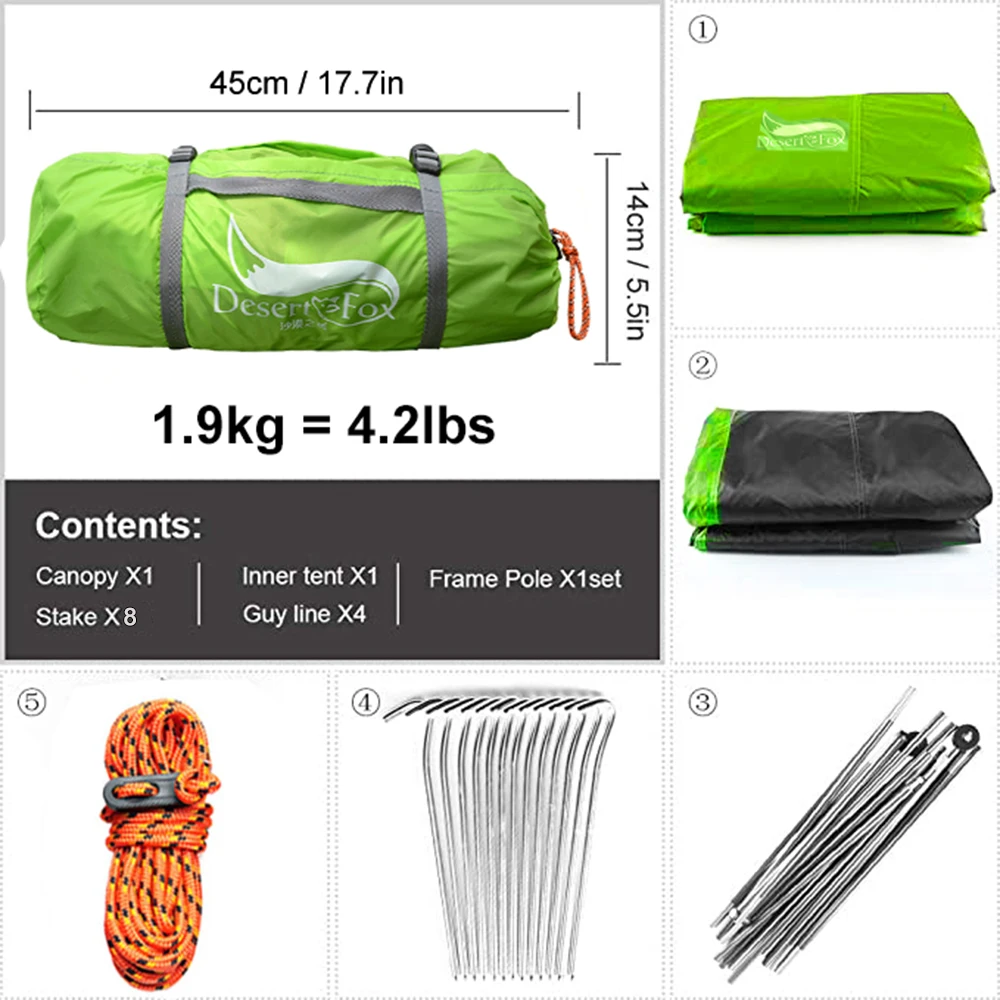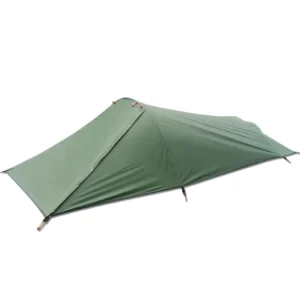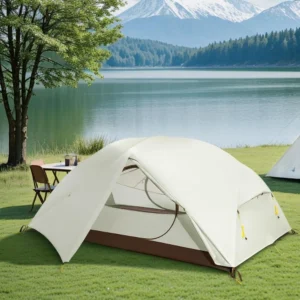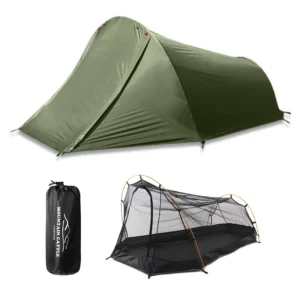What Makes a Shelter “Freestanding”? Key Definitions and Types
Freestanding hiking shelters stand on their own through a system of poles that create a self-supporting structure without requiring stakes for the main body to maintain its shape. Think of them as the “pop-up” version of backcountry accommodations – once assembled, they hold their form independently, even when picked up and moved.
The defining characteristic of these shelters is their pole architecture. Most utilize crossing aluminum or carbon fiber poles that create tension against the tent fabric, forming stable geometric shapes like domes or rectangles. This self-supporting design allows you to set up your shelter and then position it exactly where you want it, a significant advantage in challenging terrain.
It’s important to distinguish between:
- Fully freestanding tents: Complete structural integrity without any stakes (though they still benefit from staking for stability)
- Semi-freestanding tents: The main shelter body stands independently, but features like vestibules require staking for proper function
The design of freestanding tent structure has evolved significantly since the early dome tent designs of the 1970s. Modern versions feature innovative hub systems, lightweight materials, and sophisticated pole connections that maximize interior space while minimizing weight.
Freestanding vs. Non-Freestanding Shelters: A Clear Comparison
Understanding the fundamental differences between freestanding and non-freestanding shelters helps you make the right choice for your specific needs:
| Feature | Freestanding Shelters | Non-Freestanding Shelters |
|---|---|---|
| Setup Process | Faster, more intuitive with included poles | Requires precise staking and often trekking poles |
| Weight | Typically heavier (3-5 lbs for 2-person) | Usually lighter (1-3 lbs for 2-person) |
| Stability | Self-supporting, versatile placement | Requires good staking, more site-dependent |
| Usable Space | Often more headroom and livable space | Can have sloped walls limiting usable space |
| Materials | More pole materials, often double-wall | Minimal poles, often single-wall construction |
| Ventilation | Usually better with separate inner/outer layers | More condensation issues in single-wall designs |
The main tradeoff centers on weight versus convenience. Modern freestanding vs. staked hiking shelters represent different design philosophies: freestanding options prioritize ease of setup and versatility, while non-freestanding designs focus on weight reduction at the cost of some convenience.
Semi-freestanding designs attempt to bridge this gap, reducing some weight by requiring partial staking while maintaining much of the ease-of-use freestanding tents offer. For the ultralight backpacker, the differences between freestanding vs. non-freestanding ultralight tents become even more pronounced, with specialized materials driving significant weight differences.
5 Key Advantages of Freestanding Hiking Shelters
Versatile Setup Locations
Freestanding shelters truly excel when faced with challenging terrain. Their self-supporting design allows setup on surfaces where stakes simply won’t work – solid rock, wooden platforms, sandy beaches, or even packed snow. This versatility means you can camp confidently in places where non-freestanding shelters would be impossible to pitch properly.Easy Repositioning and Quick Setup
Ever set up your tent only to discover a hidden rock underneath? With freestanding shelters for hikers, simply lift the entire structure and move it a few feet without dismantling everything. This convenience extends to the setup process itself, which typically involves connecting poles and clipping the tent body – a more intuitive process than precisely staking out guy lines.Enhanced Livability and Interior Volume
The robust pole structure of freestanding designs often creates more vertical walls and increased headroom compared to many ultralight options. This architectural advantage translates to a more comfortable living space where you can sit up, change clothes, and organize gear with greater ease – a welcome feature after long days on the trail.Superior Weather Protection
The engineered pole structure of many freestanding shelters provides excellent stability in varied weather conditions. The definitive guide to freestanding shelters highlights how their self-supporting nature helps maintain shape even in strong winds, while their typical double-wall construction offers better protection against heavy rain and condensation.Better Ventilation Systems
Most freestanding tents feature double-wall construction with a separate rainfly, creating natural airflow channels between layers. This design significantly reduces condensation compared to single-wall shelters, keeping your sleeping space drier and more comfortable, especially during multi-day trips in humid conditions.
4 Potential Drawbacks to Consider
Weight Penalty
The most significant tradeoff for freestanding shelters is additional weight. The poles and structural components that provide the self-supporting advantage add 1-2 pounds compared to minimalist non-freestanding alternatives. For long-distance hikers counting every ounce, this weight difference matters. However, many modern options strike reasonable balances, and determining if a 3kg backpacking tent is too heavy depends entirely on your personal priorities and hiking style.Larger Packed Size
The poles that give freestanding shelters their structure also create a bulkier packed profile. While the fabric may compress similarly to other shelter types, the rigid poles often determine the minimum packed length, typically around 18-20 inches. This larger volume requires more space in your backpack compared to trekking-pole supported shelters.Higher Cost
The more complex design and additional materials in freestanding shelters generally translate to higher retail prices. Quality freestanding options typically cost $50-100 more than comparable non-freestanding alternatives, reflecting the additional engineering and materials required.Still Benefits from Staking
Despite the “freestanding” designation, these shelters perform best when properly staked out. While the main body maintains its shape independently, securing the tent prevents shifting in wind and properly tensions rainflys and vestibules for optimal weather protection.
Perfect for Challenging Terrain: Rocky, Sandy, and Wooden Platform Sites

Freestanding shelters truly shine when faced with difficult terrain that would challenge or defeat traditional staked designs:
Rocky Terrain
When camping on solid rock or extremely hard-packed ground, the self-supporting nature of freestanding tent rocky terrain solutions becomes invaluable. Instead of struggling to hammer stakes into impenetrable surfaces, simply set up the shelter and use rocks to weigh down the corners. The tent’s structural integrity remains intact even without staking, providing reliable protection.
Sandy Surfaces
Desert camping presents unique challenges as regular stakes pull out easily from loose sand. Freestanding shelters can be set up first, then secured using specialized sand stakes, filled stuff sacks as anchors, or by burying tent corners. This flexibility means you can establish shelter quickly and then optimize the anchoring system.
Wooden Platforms
Established campsites and wilderness shelters often feature wooden platforms that prevent conventional staking. Freestanding backpacking tents easily overcome this limitation, requiring only a few creative attachment points for the rainfly rather than comprehensive staking for the entire structure.
Snow Camping
In winter conditions, freestanding designs allow you to establish shelter before addressing snow anchoring. Set up the tent first to create a workable shelter, then secure it using snow stakes, buried stuff sacks (deadmen anchors), or snow walls for additional protection.
Ideal for Quick Setup and Beginner Backpackers
For those new to backpacking or anyone who values simplicity, freestanding shelters offer significant advantages that shouldn’t be overlooked:
The intuitive design of most best freestanding hiking shelters features color-coded poles and attachment points that make the setup process straightforward and logical. This simplicity reduces frustration at the end of a tiring day on the trail when energy and patience may be limited.
Beginners particularly benefit from the forgiving nature of freestanding designs. If stakes are placed improperly or pull out during the night, the shelter maintains its structural integrity rather than collapsing. This forgiveness creates confidence and reduces anxiety about shelter failure during a trip.
The ability to easily reposition your shelter proves invaluable when learning campsite selection skills. Noticed a small depression under your tent floor? With easy setup camping tents, you can simply lift and move the entire setup without dismantling it – a significant time-saver and convenience feature that experienced backpackers also appreciate.
Weather Performance: Protection in Wind, Rain and Snow
Freestanding shelters’ robust pole structures provide significant advantages in challenging weather conditions:
In windy environments, the engineered pole geometry creates tension throughout the shelter fabric, helping it maintain shape and resist deformation. Mastering wind stability freestanding tent techniques includes proper orientation, full stakeout of guy lines, and ensuring the rainfly is properly tensioned. These steps maximize the inherent structural advantages of the design.
During heavy rainfall, the separate rainfly common to most freestanding shelters provides excellent water management. The gap between inner tent and fly creates a buffer zone that prevents splashback and condensation transfer, while the taut pitch sheds water effectively. Waterproof backpacking tents with quality seam sealing and appropriate rainfly coverage keep you dry in sustained precipitation.
For winter camping, the stronger pole structure of 4-season freestanding shelters bears snow loads that would collapse less robust designs. The dome or geodesic architectures specifically distribute weight across multiple intersection points, preventing dangerous snow accumulation and maintaining critical shelter integrity when you need it most.
When Freestanding Shelters Truly Shine: Base Camping and Extended Bad Weather
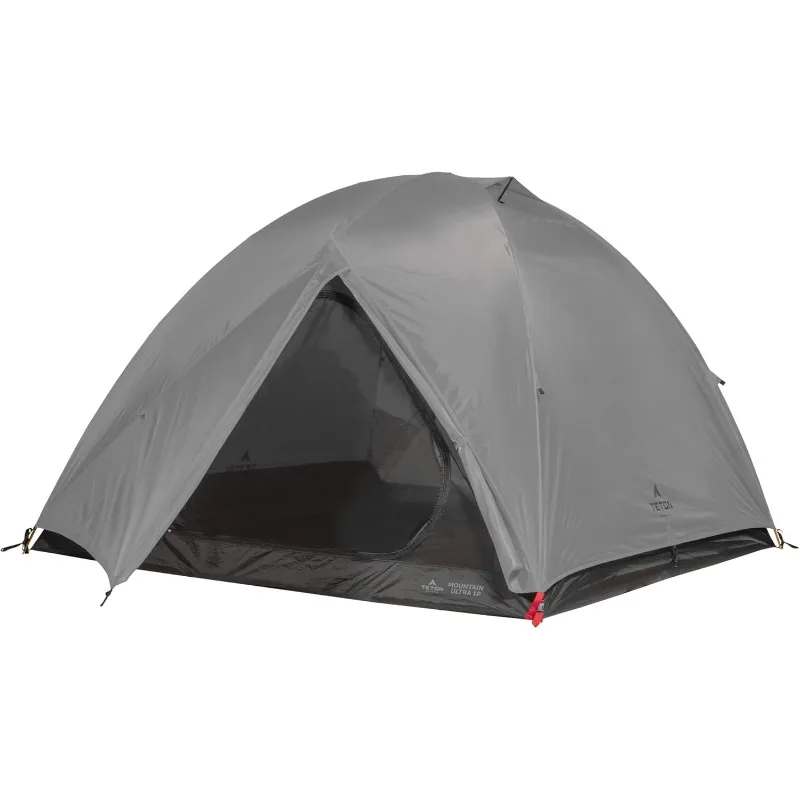
Freestanding shelters demonstrate their greatest value during extended stays at a single location or when weathering prolonged storms:
The enhanced living space and headroom found in most freestanding designs becomes increasingly appreciated during longer stays. The ability to sit upright, organize gear efficiently, and move around transforms a shelter from merely adequate to genuinely comfortable. This improved livability reduces the psychological strain of extended time in a confined space.
During multi-day storms, the superior ventilation systems of double-wall freestanding shelters significantly reduce condensation buildup. This keeps sleeping bags, clothing, and gear drier, maintaining comfort and safety during extended periods inside. 4-season winter 2-person tents excel in these conditions, providing the robust protection needed for harsh environments.
Many freestanding designs feature multiple doors and vestibules, creating separate entry/exit points and covered storage that proves invaluable during extended use. This thoughtful organization prevents the chaos that often develops in smaller, more minimalist shelters during longer stays.
Lightweight Backpacking Tent, Ultralight Backpacking Tent, Ultralight Bivy Tent
Ultralight Single Person Camping Tent with Aluminum Poles for 3-Season Backpacking Waterproof DesignPrice range: $94.88 through $326.82 Select options This product has multiple variants. The options may be chosen on the product pageLightweight Backpacking Tent, Ultralight Backpacking Tent, Waterproof Backpacking Tent
$391.05 Select options This product has multiple variants. The options may be chosen on the product pageHeavy Duty 4 Season Tent, Mountaineering Tent, Winter Camping Tent
$870.40 Select options This product has multiple variants. The options may be chosen on the product pageCompact Backpacking Tent, Lightweight Backpacking Tent, Waterproof Camping Tent
$335.52 Select options This product has multiple variants. The options may be chosen on the product pageUltralight Backpacking Tent, Ultralight Dome Tent, Winter Camping Tent
Price range: $369.63 through $370.07 Select options This product has multiple variants. The options may be chosen on the product pageHeavy Duty 4 Season Tent, Ultralight Freestanding Tent, Winter Camping Tent
$3,722.66 Select options This product has multiple variants. The options may be chosen on the product page
When to Choose Non-Freestanding Options Instead
While freestanding shelters offer numerous advantages, certain scenarios favor non-freestanding alternatives:
For ultralight backpacking where every ounce matters, particularly on long-distance trails or high-mileage days, the weight savings of non-freestanding shelters (often 1-2 pounds lighter) become a significant advantage. These weight reductions, when combined with maximizing space comfort ultralight shelters techniques, can make lightweight designs the better choice for weight-conscious hikers.
When hiking with trekking poles, non-freestanding shelters that utilize these poles for support effectively “eliminate” pole weight from your shelter system since you’re already carrying the poles for hiking. This dual-purpose efficiency makes ultralight trekking pole tents particularly attractive for many backcountry travelers.
In consistently forested terrain with reliable staking opportunities and natural wind protection, the advantages of freestanding designs become less critical. The stable ground and sheltered environments mitigate many of the challenges that freestanding tents excel at overcoming.
Experienced backpackers comfortable with more technical setup processes may prefer the weight savings of non-freestanding designs, having developed the skills to overcome their limitations through practice and technique.
Essential Features to Evaluate When Choosing a Freestanding Shelter
When selecting a freestanding shelter, focus on these critical characteristics:
Capacity and Livable Space
Manufacturer capacity ratings (1-person, 2-person) often represent tight fits. Evaluate actual floor dimensions, headroom at sitting height, and wall angles that affect usable space. Many backpackers size up for comfort, especially for longer trips or larger individuals.
Seasonality
3-season shelters balance ventilation and weather protection for spring through fall conditions, while 4-season designs offer robust pole structures and reduced mesh for winter use. Be realistic about your typical hiking seasons when selecting.
Weight Considerations
Modern freestanding hiking tents design features include innovations to reduce weight without sacrificing performance. Ultralight freestanding options may use carbon fiber poles, thinner fabrics, and streamlined designs to approach the weight of non-freestanding alternatives, though at higher cost.
Pole Architecture
Different pole designs create distinct interior profiles. Hub-based systems maximize headroom, while simple cross-pole designs save weight. Aluminum poles offer reliable performance at moderate weight, while carbon fiber reduces weight at premium prices.
Fabric Durability
Floor fabrics with higher denier ratings (30-70D) resist punctures better than ultralight options (15-20D), but add weight. Consider your typical camping surfaces and willingness to use a footprint when evaluating fabric durability needs.
Doors and Vestibules
Multiple doors eliminate climbing over your partner in 2-person designs, while generous vestibules provide crucial protected storage space for gear. These features add slight weight but significantly enhance livability.
For those seeking the best balance of weight and convenience, lightweight backpacking tents offer compelling options that maintain freestanding benefits while reducing pack weight.
Is a Freestanding Shelter Right for Your Hiking Style? Decision Framework
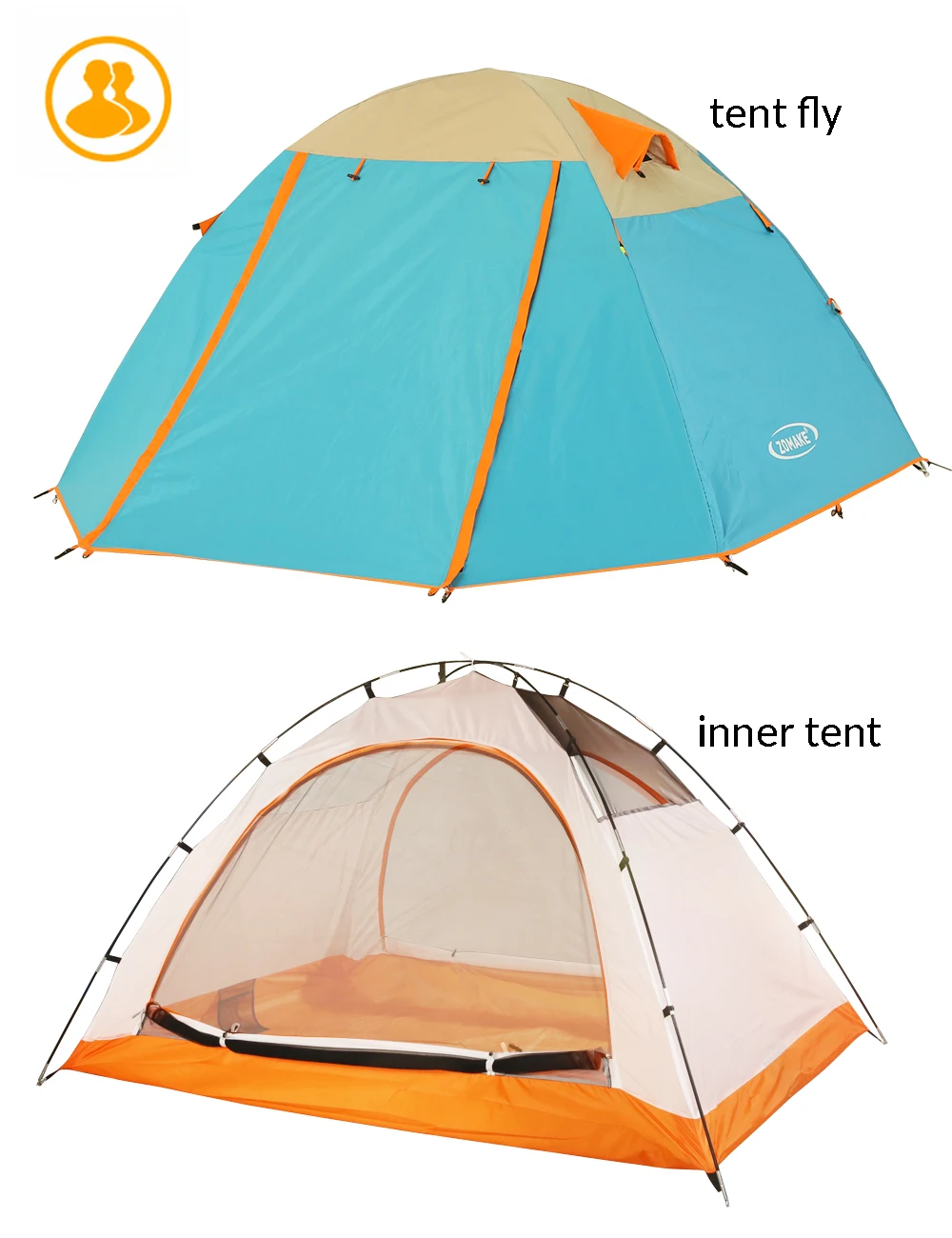
Determine if a freestanding shelter matches your needs by asking these key questions:
What terrain do you typically encounter?
If your adventures include rocky ground, established platforms, beaches, or snow camping, freestanding designs offer significant advantages.How important is setup simplicity?
For beginners, those who often arrive at camp exhausted, or hikers who frequently set up in challenging weather, the intuitive and rapid setup of freestanding shelters provides valuable benefits.Is weight your primary concern?
If you’re counting every ounce for long-distance hikes, non-freestanding designs may better serve your needs unless you specifically require freestanding advantages.Do you value interior comfort and livability?
For longer trips, base camping, or if you spend significant time in your shelter, the enhanced living space of freestanding designs improves overall experience.
The ideal solution often depends on balancing these factors against your personal hiking style and the environments you typically explore.
Best Practices for Setting Up and Maintaining a Freestanding Shelter
Follow these guidelines to maximize your freestanding shelter’s performance and longevity:
Select an appropriate site by finding level ground free from water channels, removing sharp objects, and considering natural wind breaks. Even though freestanding shelters can set up anywhere, smart site selection improves comfort and durability.
Establish the main structure first by assembling poles and attaching them to the tent body before positioning the shelter exactly where you want it. This approach allows fine-tuning of location before staking.
Always use stakes when available, even though the shelter is “freestanding.” Proper staking prevents shifting in wind and allows optimal tensioning of the rainfly. Types freestanding shelters hiking guides explain specific staking patterns for different designs.
Care for your shelter by drying completely before storage, cleaning with mild soap when necessary, and storing loosely rather than tightly compressed. These maintenance practices significantly extend your shelter’s life.
Pack properly by placing the folded tent body around the pole bundle in the center of your backpack to distribute the load effectively. This technique minimizes strain on your pack and keeps the shelter accessible.
2-person backpacking tents require specific setup techniques that balance interior space with proper tensioning – take time to learn the optimal process for your particular model.
FAQs About Freestanding Hiking Shelters
Are freestanding shelters worth the extra weight?
For most recreational backpackers, the 1-2 pound weight penalty is well worth the added convenience, versatility, and comfort, particularly in challenging terrain or variable conditions.
Do freestanding shelters always need to be staked down?
While they maintain their shape without stakes, staking significantly improves stability in wind and properly tensions rainflys and vestibules for optimal performance.
How much more do freestanding shelters typically cost?
Expect to pay approximately 15-25% more for freestanding designs compared to similar quality non-freestanding options due to more complex pole structures and materials.
Can freestanding shelters handle strong winds?
Quality freestanding shelters with proper pole architecture handle wind extremely well when properly set up and oriented, often outperforming non-freestanding designs in challenging conditions.
What’s the lifespan difference between freestanding and non-freestanding shelters?
With proper care, both types last many years, though freestanding shelters with more components may require pole section replacement eventually, while non-freestanding designs might need pole sleeve repairs.
Final Thoughts: Balancing Shelter Needs for Different Adventures
Finding your ideal shelter involves understanding both the technical aspects and how they align with your personal hiking style. Freestanding shelters excel in versatility, ease of use, and livability, making them the preferred choice for many backpackers despite modest weight penalties.
Consider maintaining flexibility in your approach – many experienced hikers eventually own multiple shelter types, selecting the appropriate option based on specific trip requirements. A freestanding design might be perfect for rocky alpine adventures, while a lighter non-freestanding option serves better for long-distance trail hiking.
At Explore Elements, we believe that shelter selection fundamentally impacts trip enjoyment. The right freestanding shelter balances protection, comfort, and practicality, becoming a reliable backcountry home rather than merely adequate protection. By carefully evaluating your needs against the features described in this guide, you’ll make a shelter choice that enhances your wilderness experiences for years to come.

